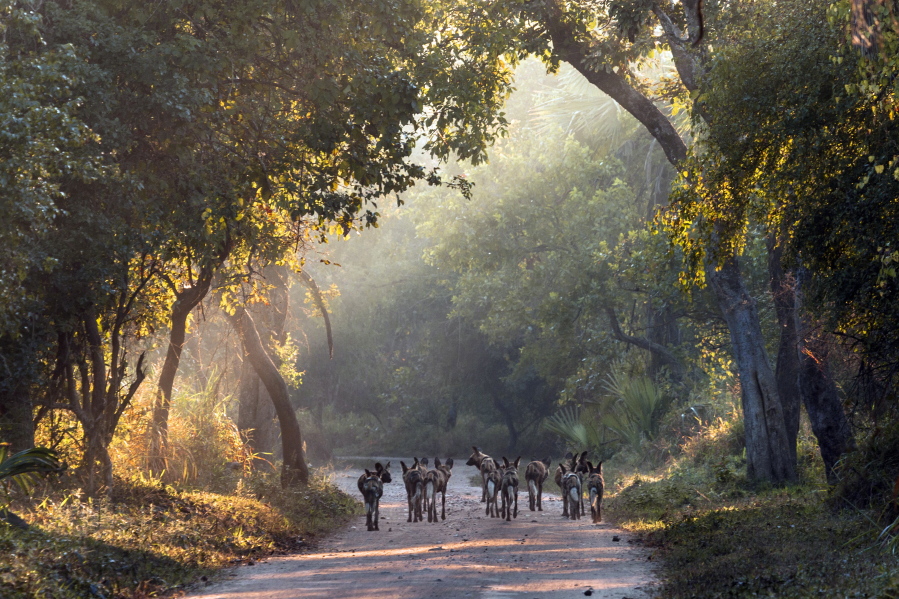GORONGOSA NATIONAL PARK, Mozambique — The African wild dogs are back.
There are just 14 of them, far fewer than those that roamed Mozambique’s Gorongosa National Park before the nearly two-decade civil war that started in the 1970s. As up to a million people lost their lives to violence and famine, much of the park’s wildlife also was wiped out — including the wild dogs, an endangered species vulnerable to snares and disease.
Now they have been re-introduced to Gorongosa, carnivores unleashed on plant eaters as part of an intricate conservation project that aims to restore a diverse ecosystem at the south end of Africa’s Great Rift Valley.
It’s complicated. Architects of the project — a joint venture between a non-profit group founded by American philanthropist Greg Carr and the Mozambican government — are wrestling with big-picture ideas about what restoration even means in a world whose wild places face intensifying pressure from human encroachment and climate change.
“We can’t go back to what exactly it was,” said Marc Stalmans, science director at the 1,570-square-mile park. “Has the environment changed over the last 50 years in a way that certain previous states can no longer be attained? Did animals move across a much larger landscape during certain seasons, and is this no longer possible nowadays with increased human densities and expanded agriculture?”
Anti-poaching efforts have helped populations of sable, hippo, elephant and other species to begin recovering. But there is more to it than trying to revive the natural order.
In its heyday, before the end of Portuguese colonial rule in 1975, the park drew celebrities like John Wayne and Gregory Peck to central Mozambique. However, it was located in one of the poorest areas in a country ranked among the world’s poorest, and black Mozambicans were excluded from meaningful involvement, according to warden Pedro Estevao Muagura.
He said education, farming and other programs designed by Carr’s Gorongosa Restoration Project to help the 200,000 people living around the park are critical to success within its boundaries. About two-thirds of the project’s $12 million budget this year is being spent outside the park; major donors include the United States Agency for International Development.
“To me, restoration means to recover what was destroyed. Not only to recover, but to improve. The center of everything, what we are doing, is the people,” Muagura said at the park’s main camp at Chitengo, where a bullet-pocked wall segment is a reminder of the civil war.
He spoke over breakfast as a vervet monkey loitered nearby, eyeing Muagura’s food; staff keep a slingshot handy in case the monkeys get too aggressive, though a sign assures guests that there is no intent to harm them.
Baboons also wander the camp and are plentiful outside its fence. Leopards, a particular threat to baboons, were thought to have been exterminated in Gorongosa. On March 29, however, a Mozambican guide driving with Finnish and American tourists at night spotted a male leopard in a possible sign that the elusive species is returning.
“I knew there were other leopards in the park, but no one believed me,” said a delighted Tato Alexandre Joao, a worker at Chitengo camp.
Joao once was a poacher — in 2004, he caught a leopard in a snare, and sold the skin to feed his 10 children. He has since renounced illegal hunting, and now tends the swimming pool and does other jobs.
More lion cubs have been born in the park. And on an April morning, newly arrived wild dogs — six females, eight males — trotted and lazed in an enclosure where they were getting to know each other, establishing a hierarchy before their release into the wild on June 16.



